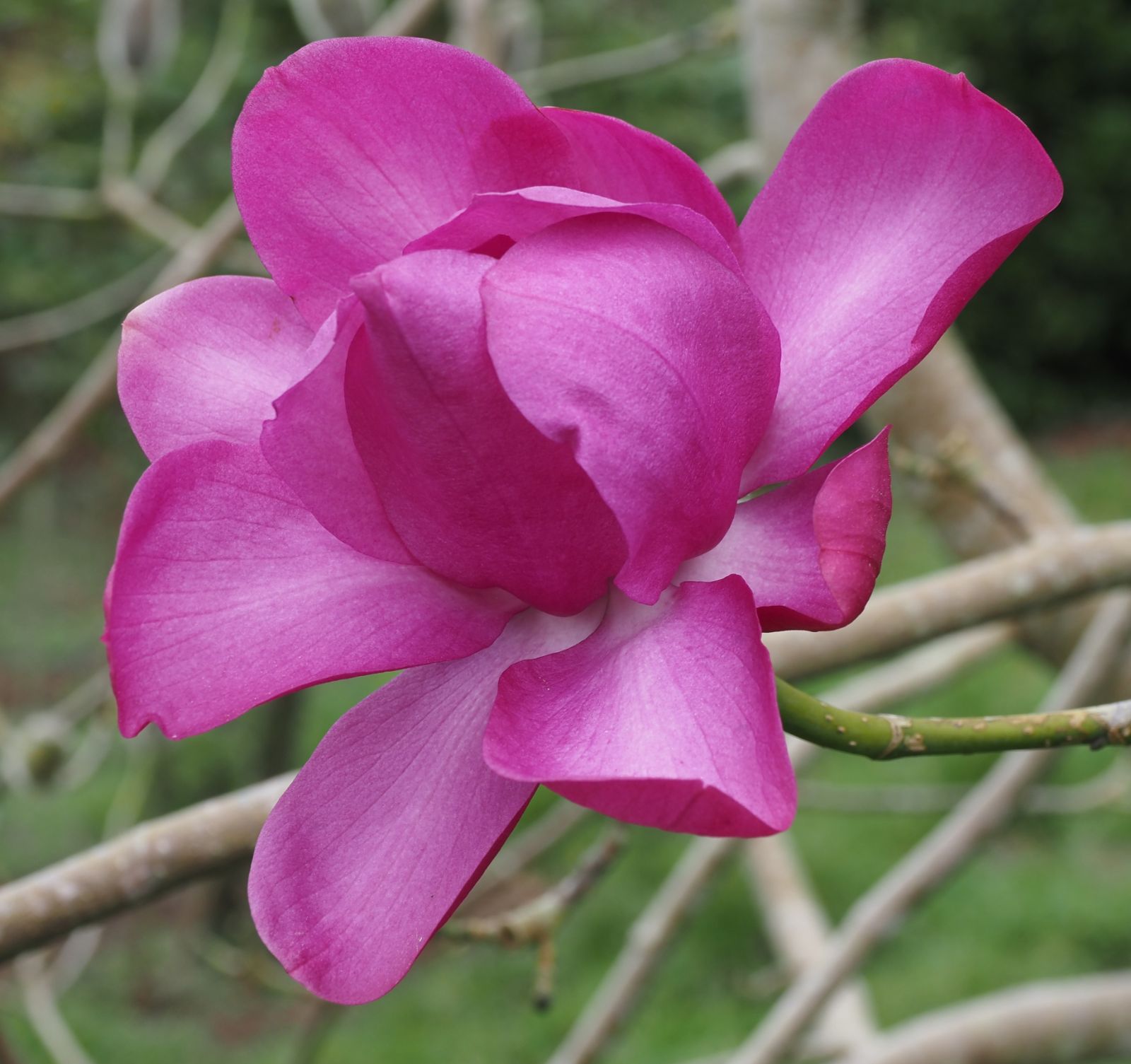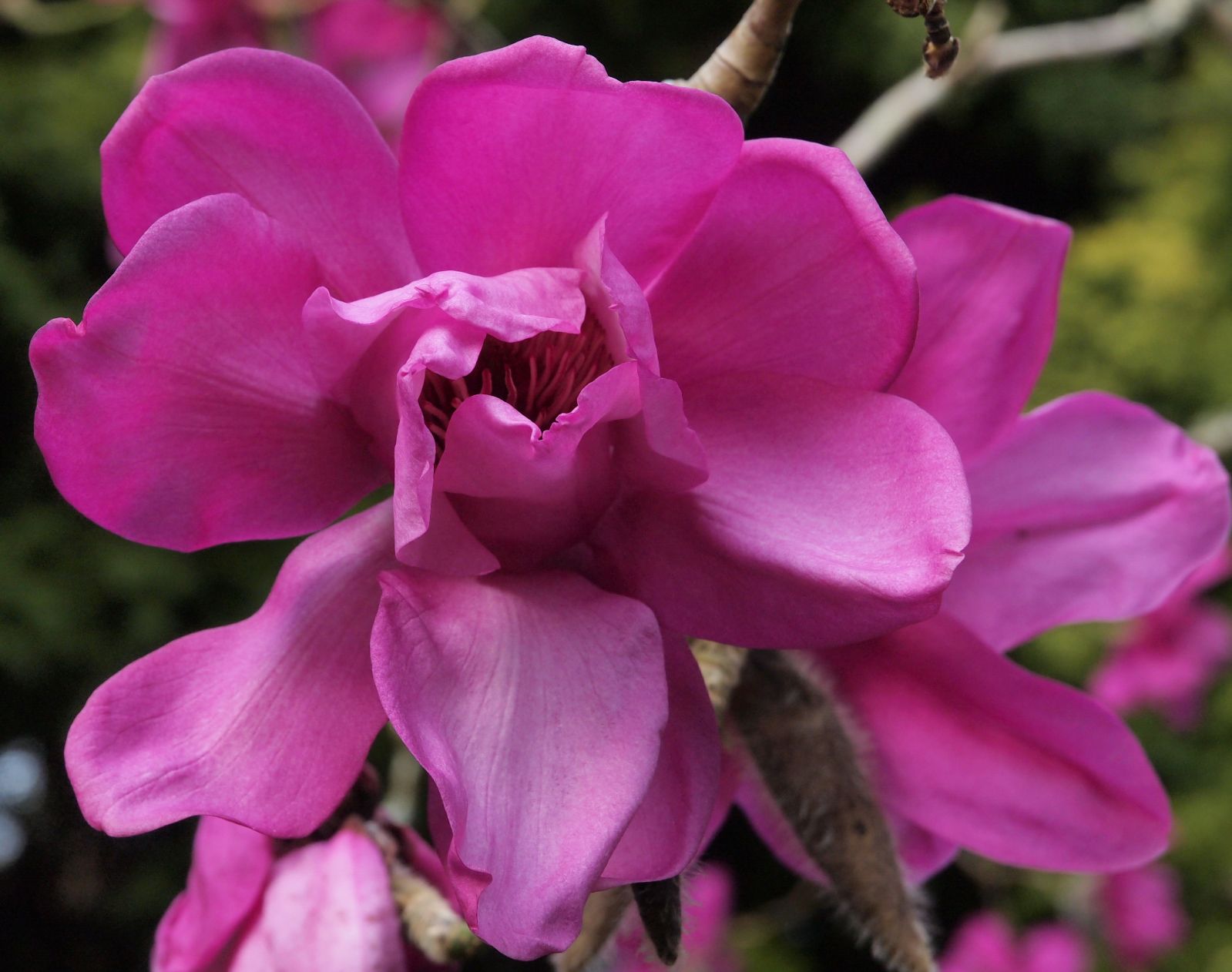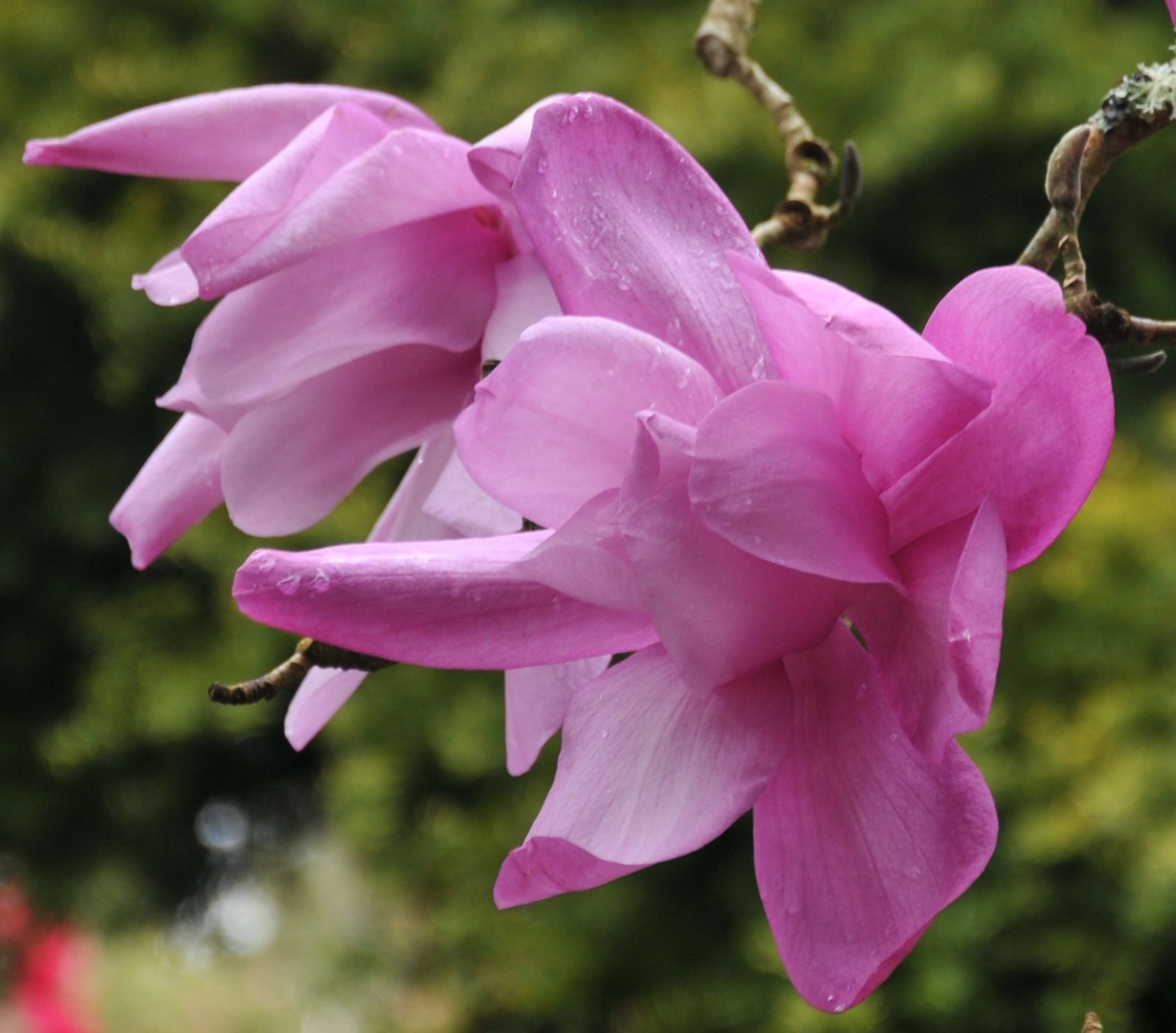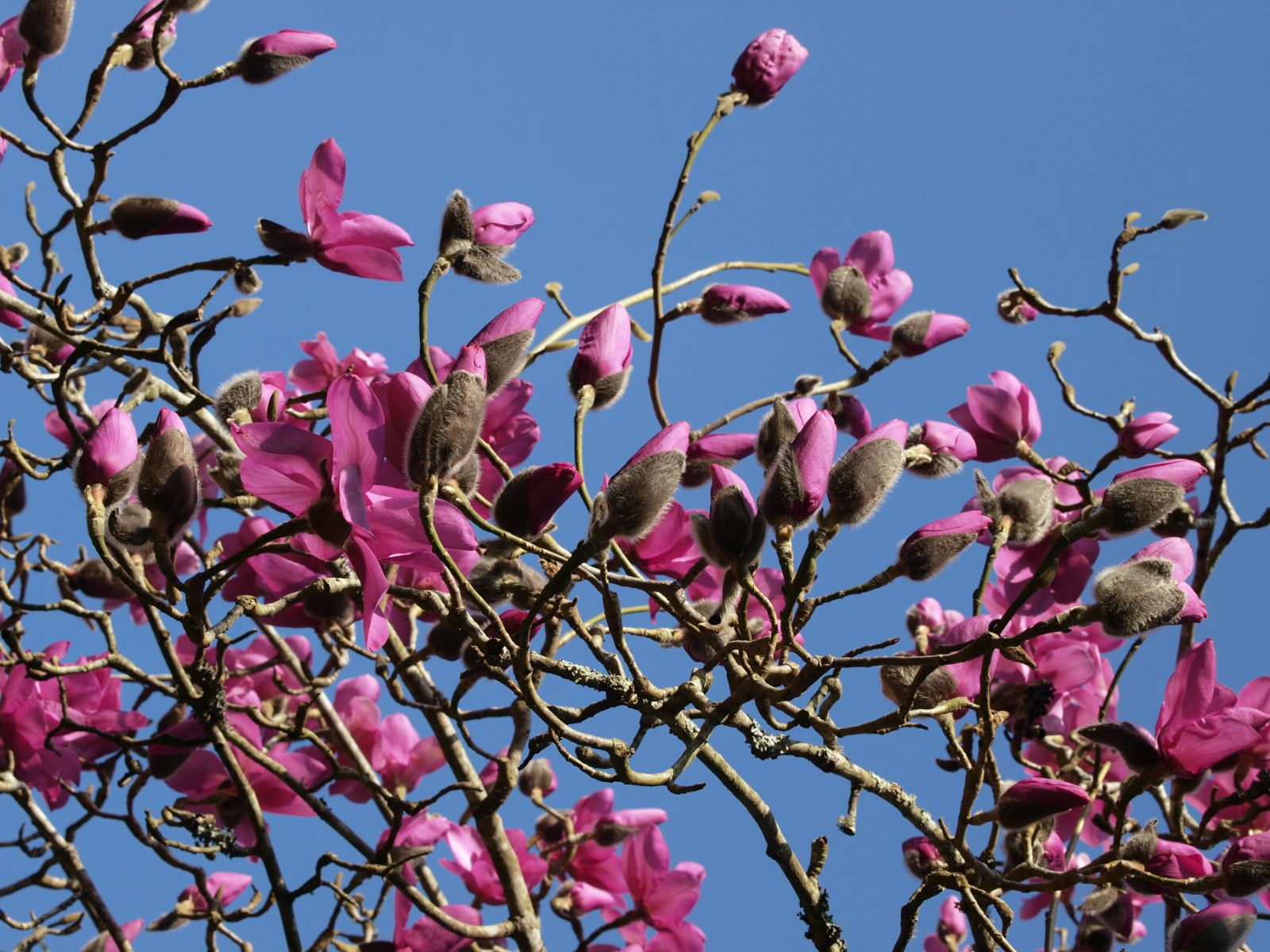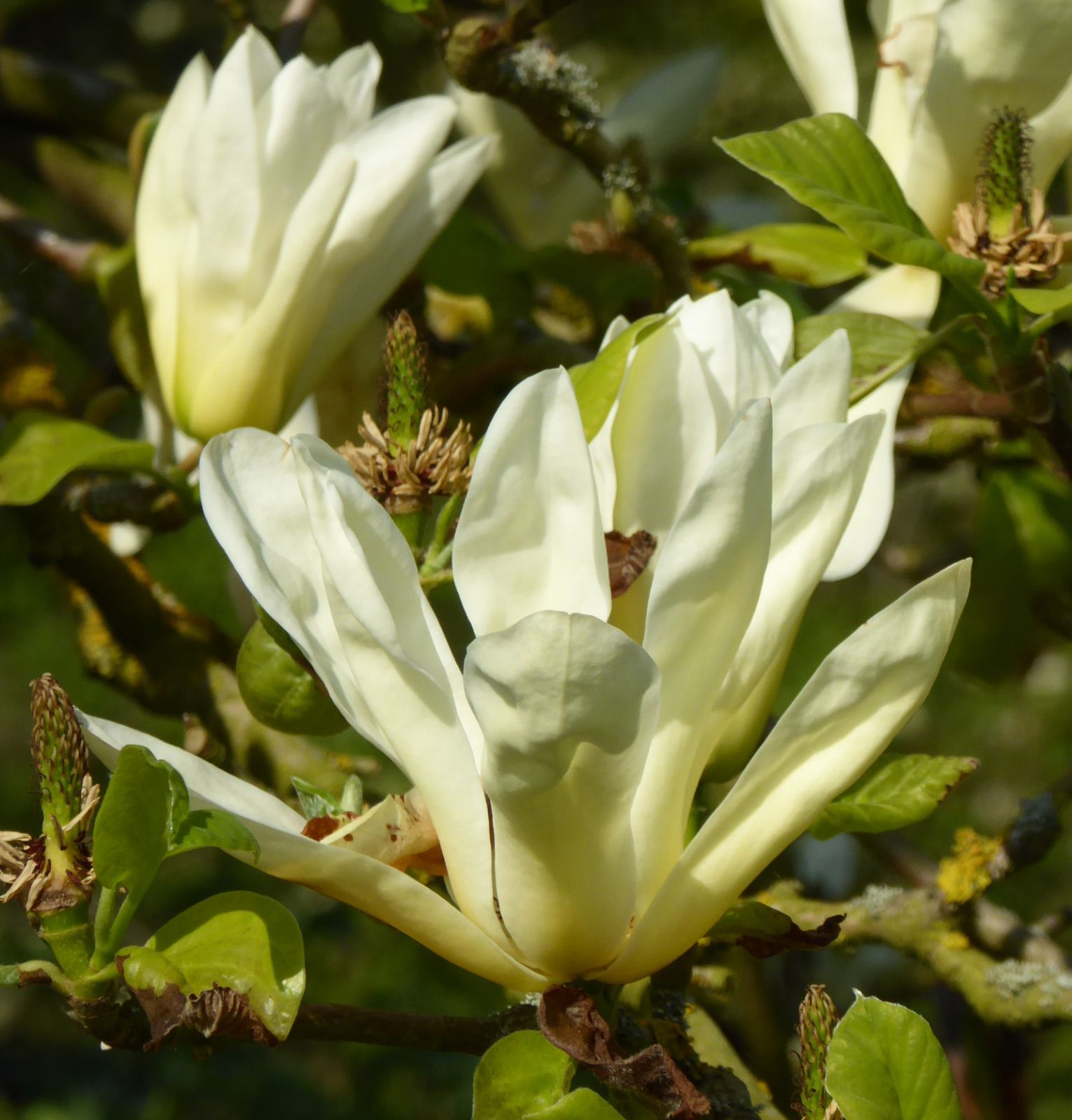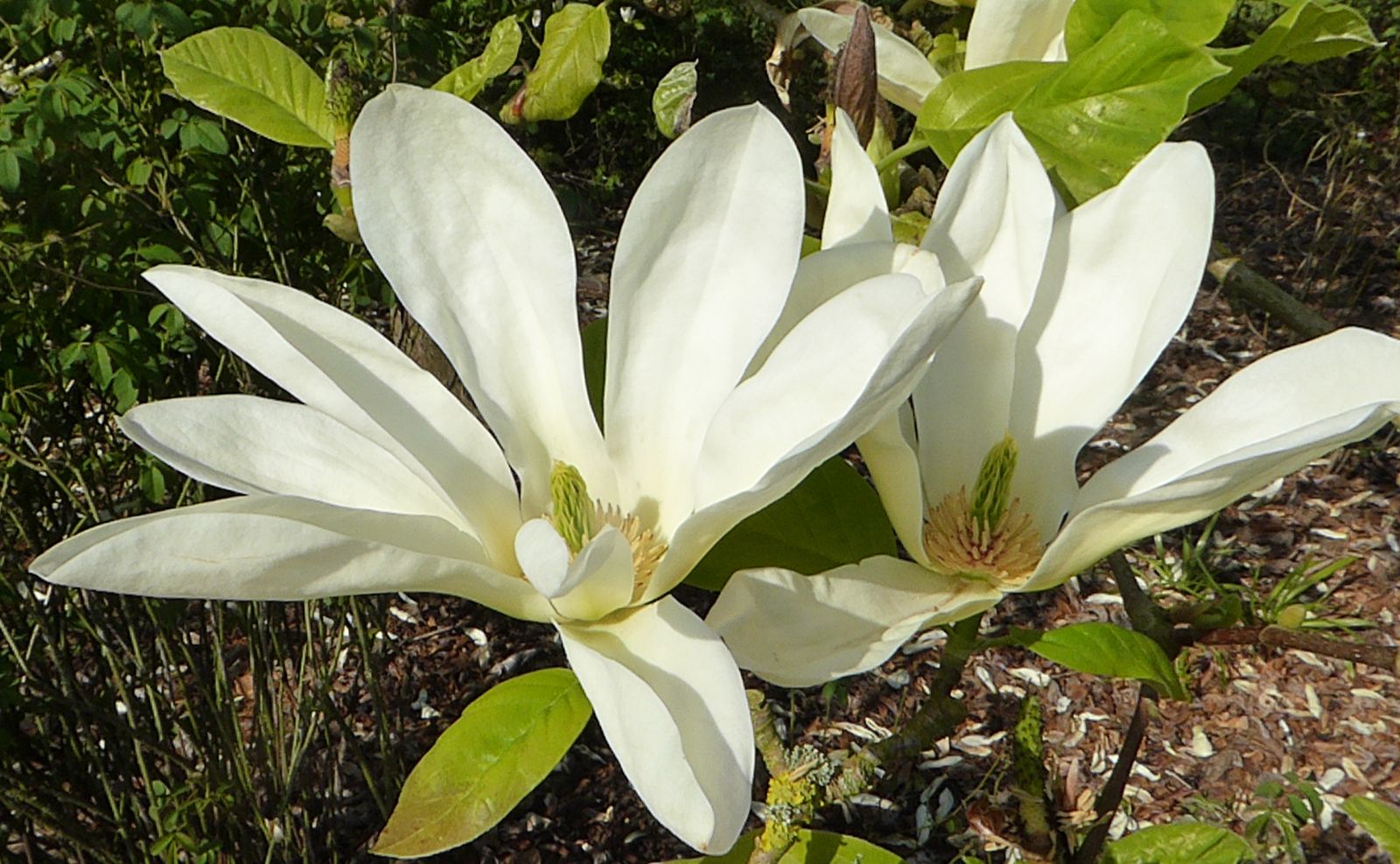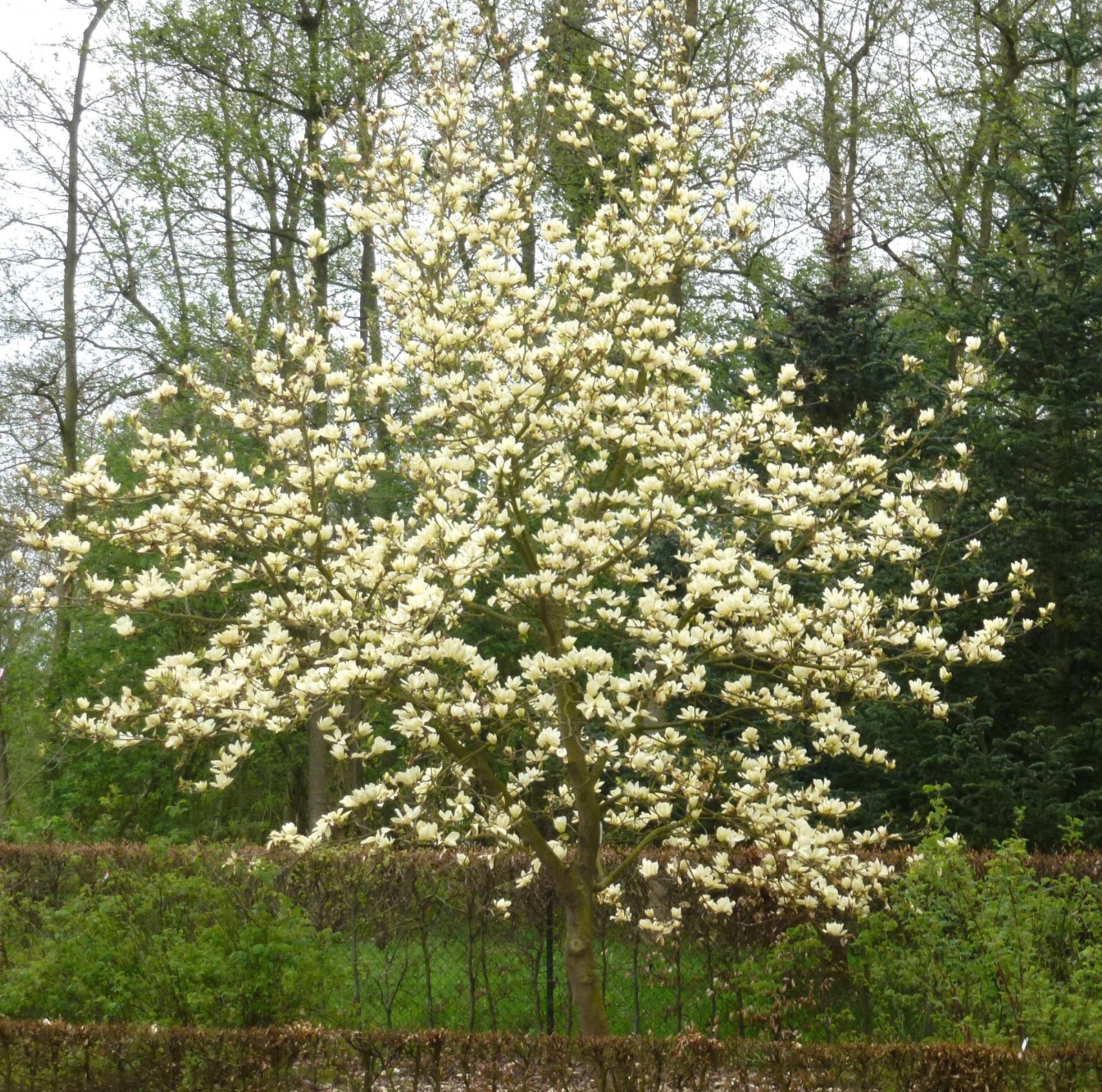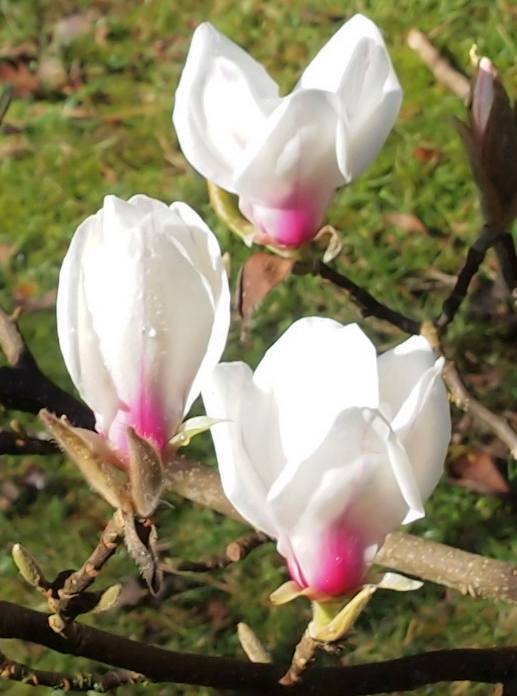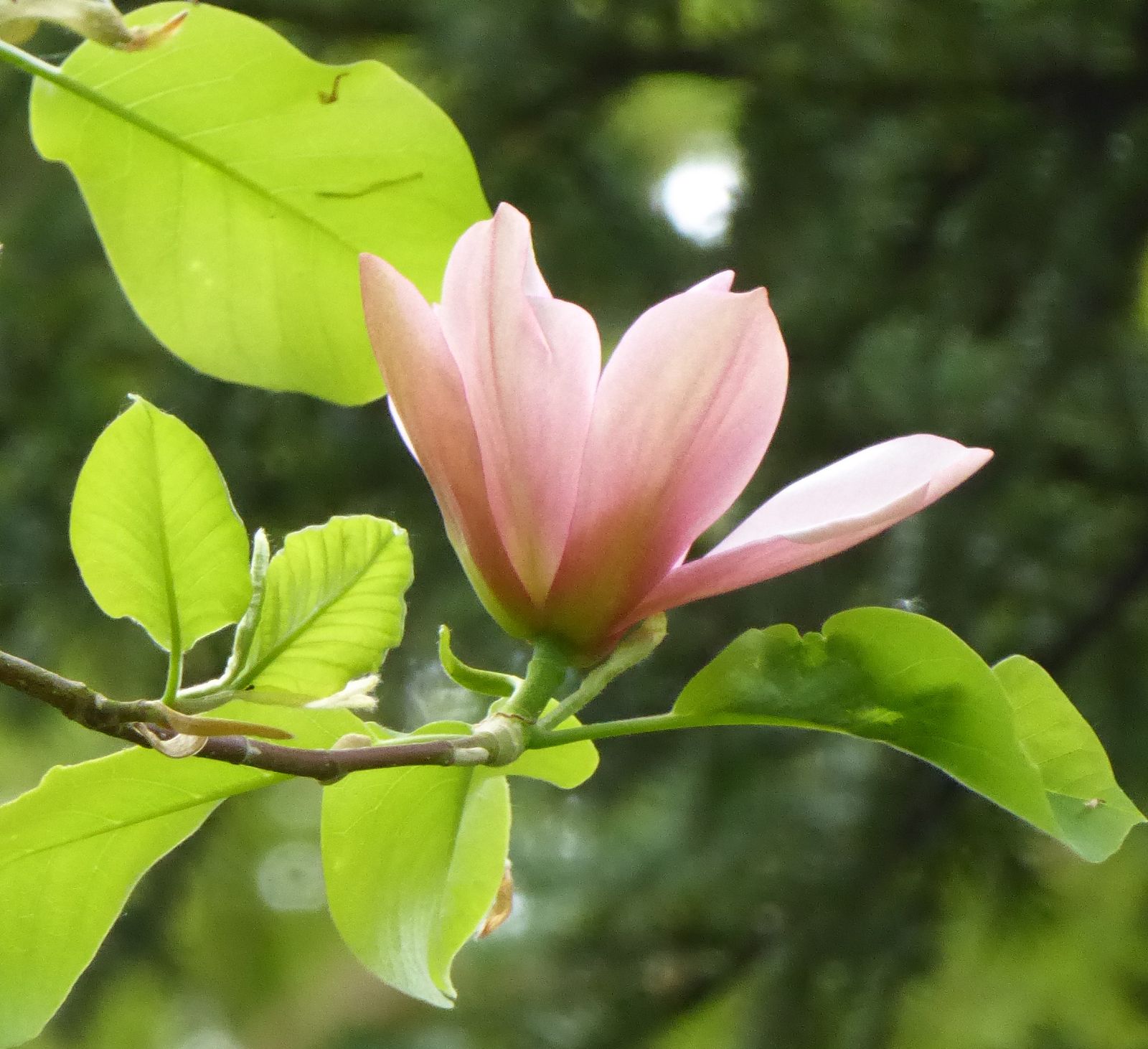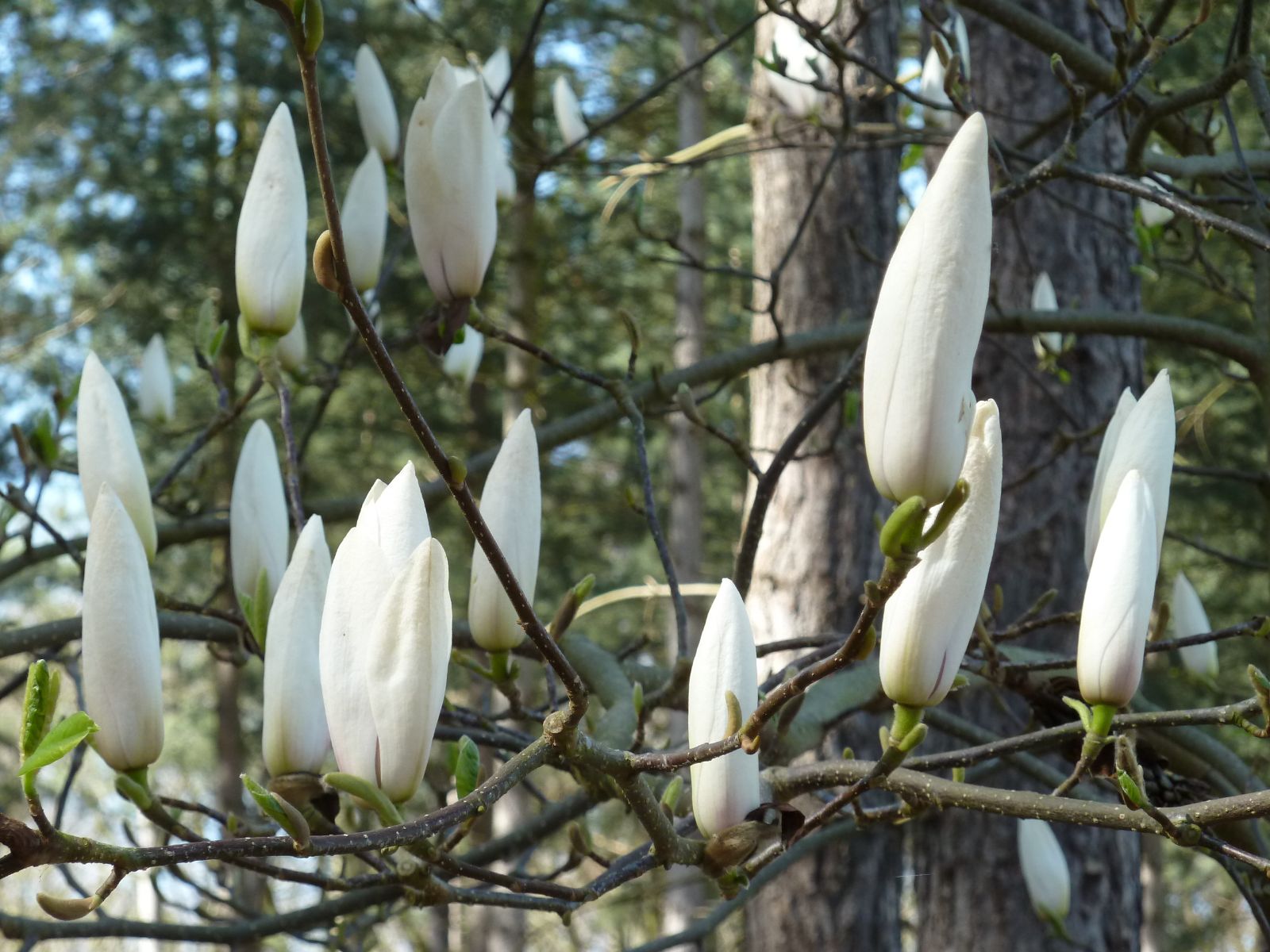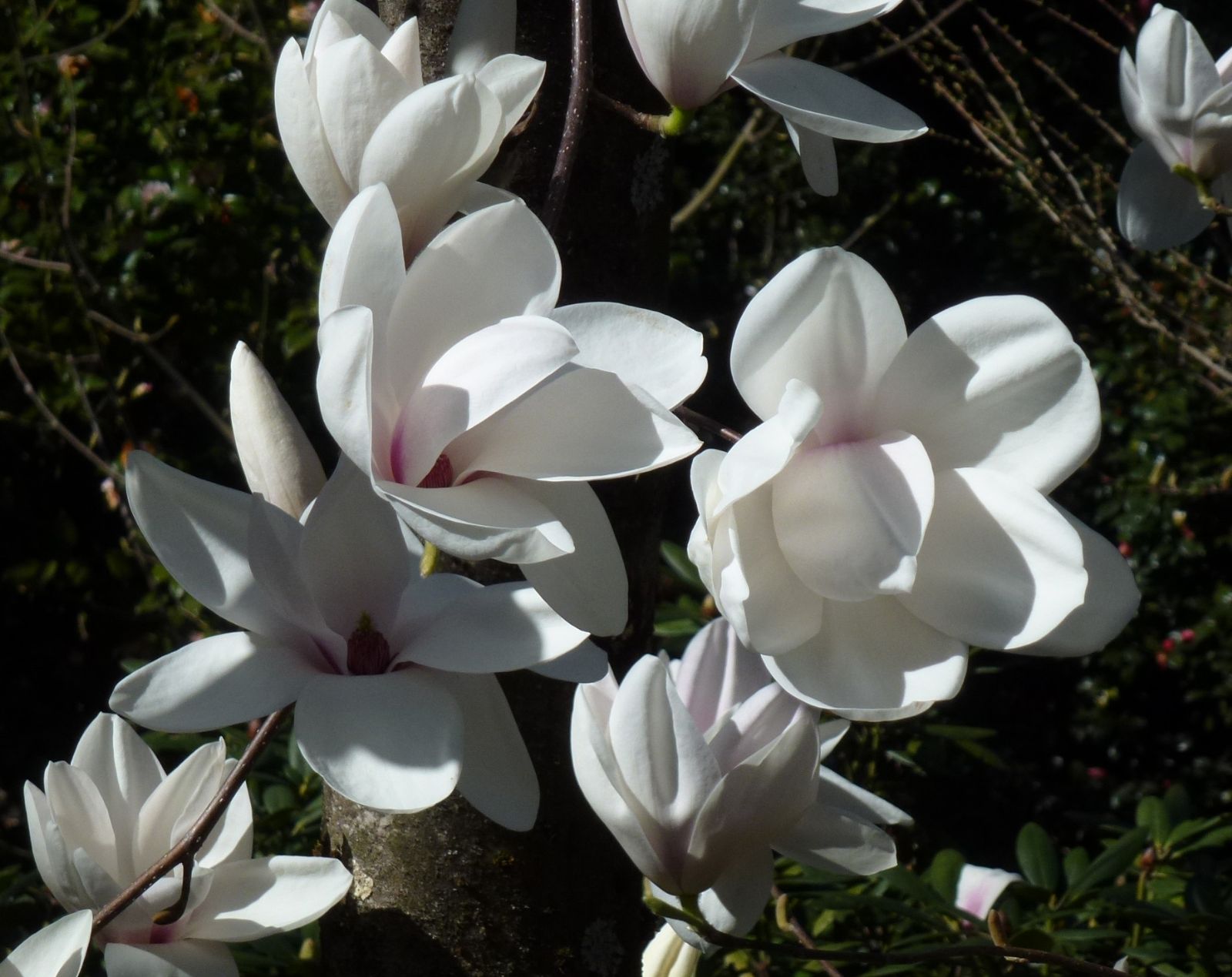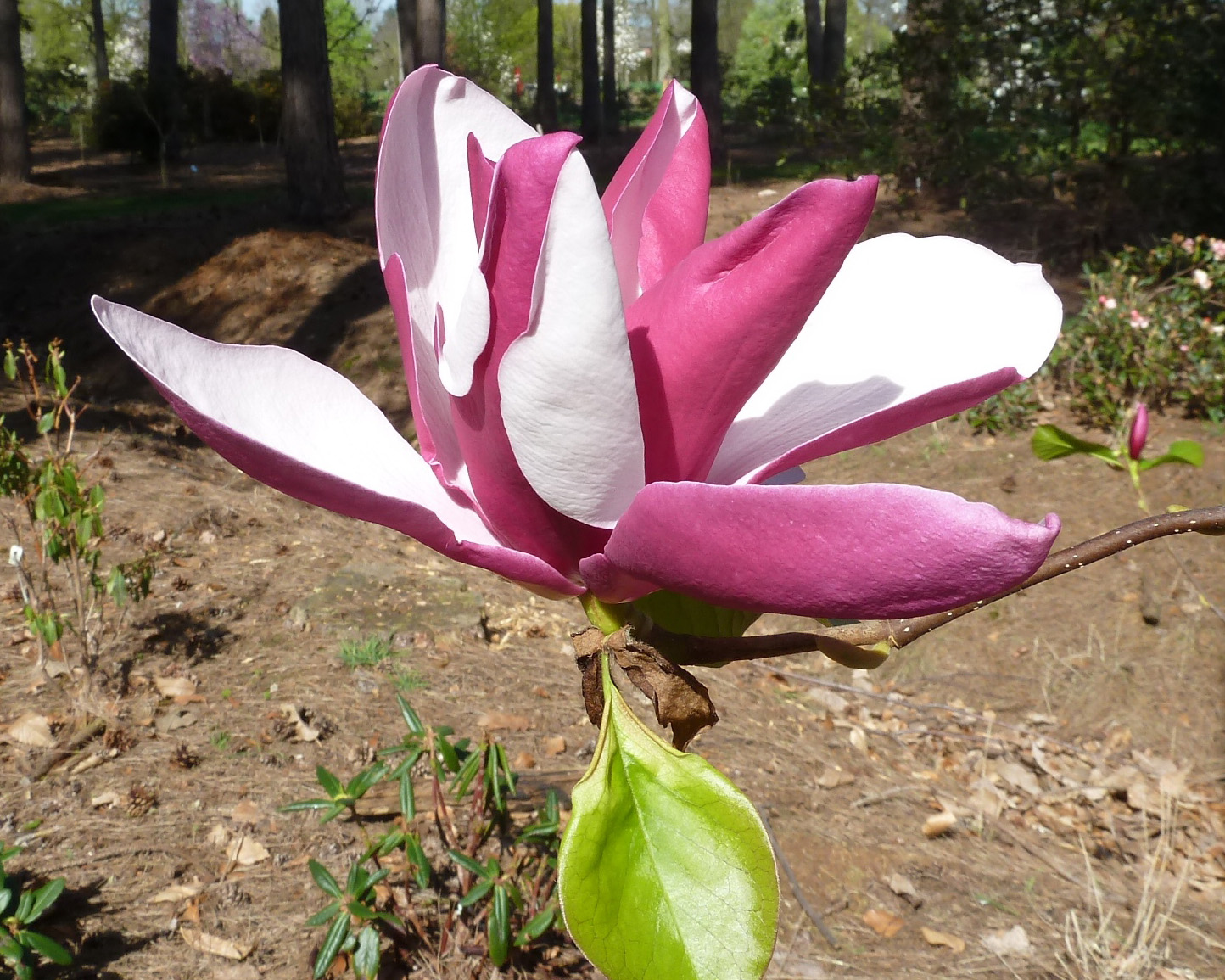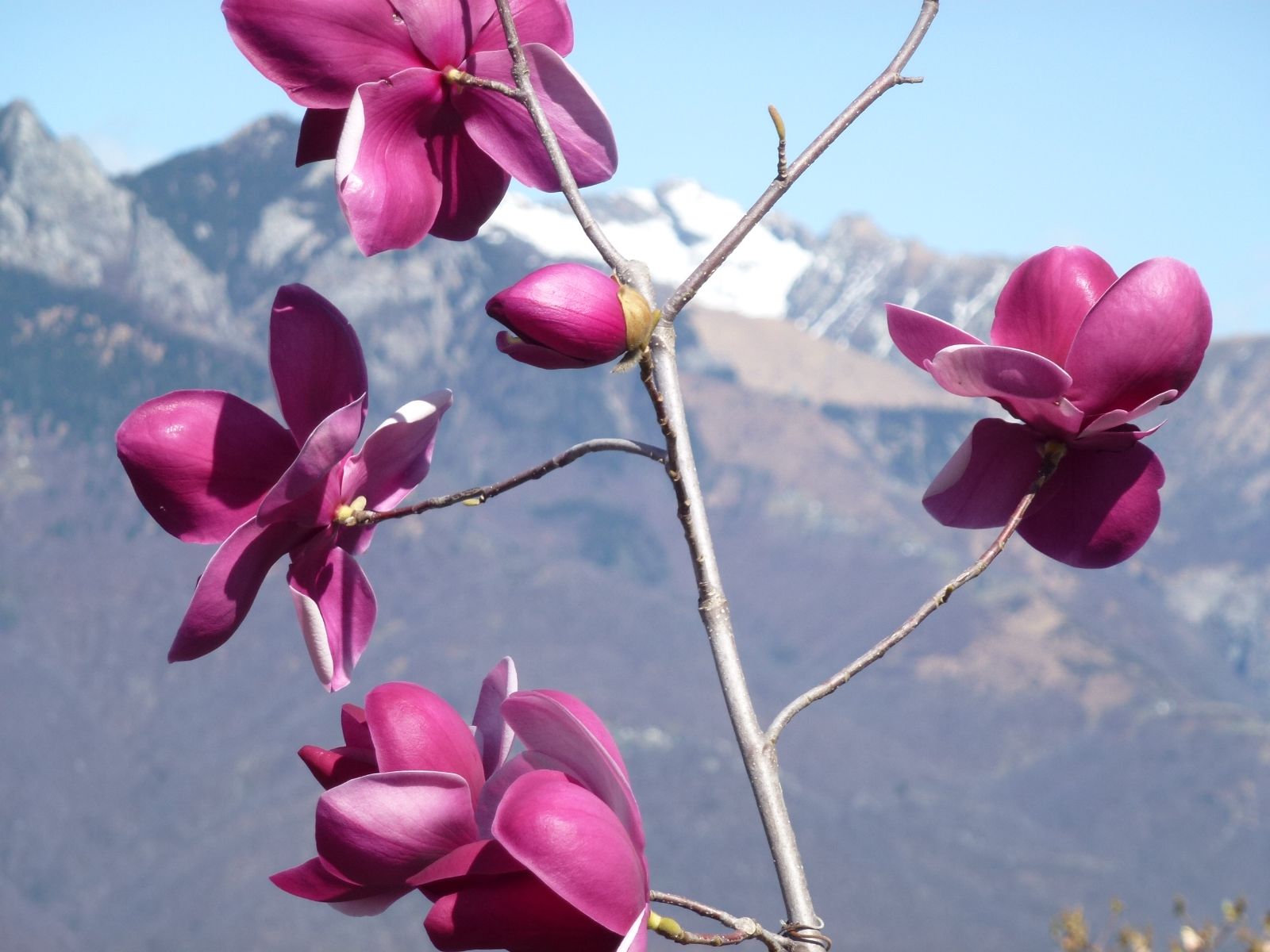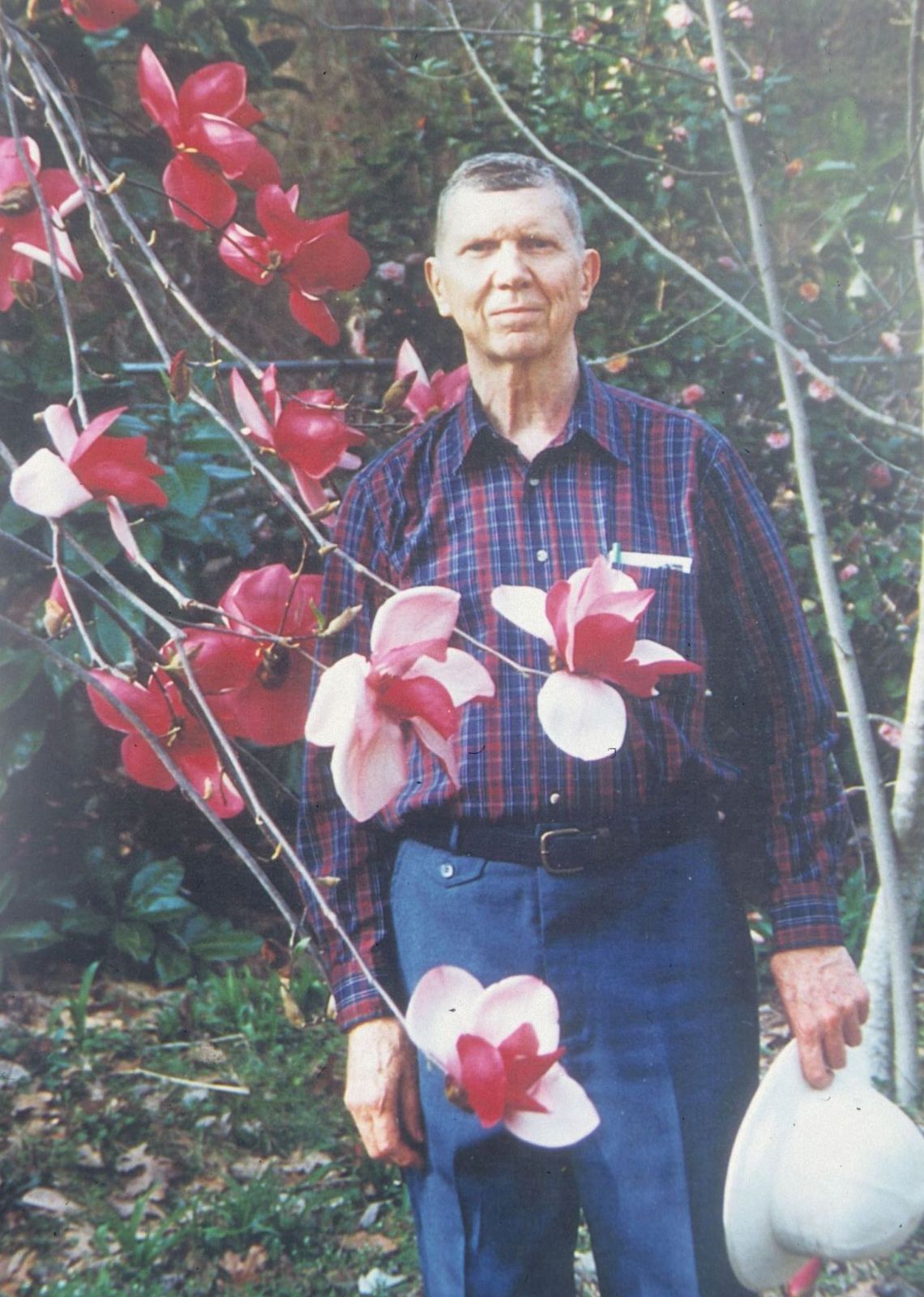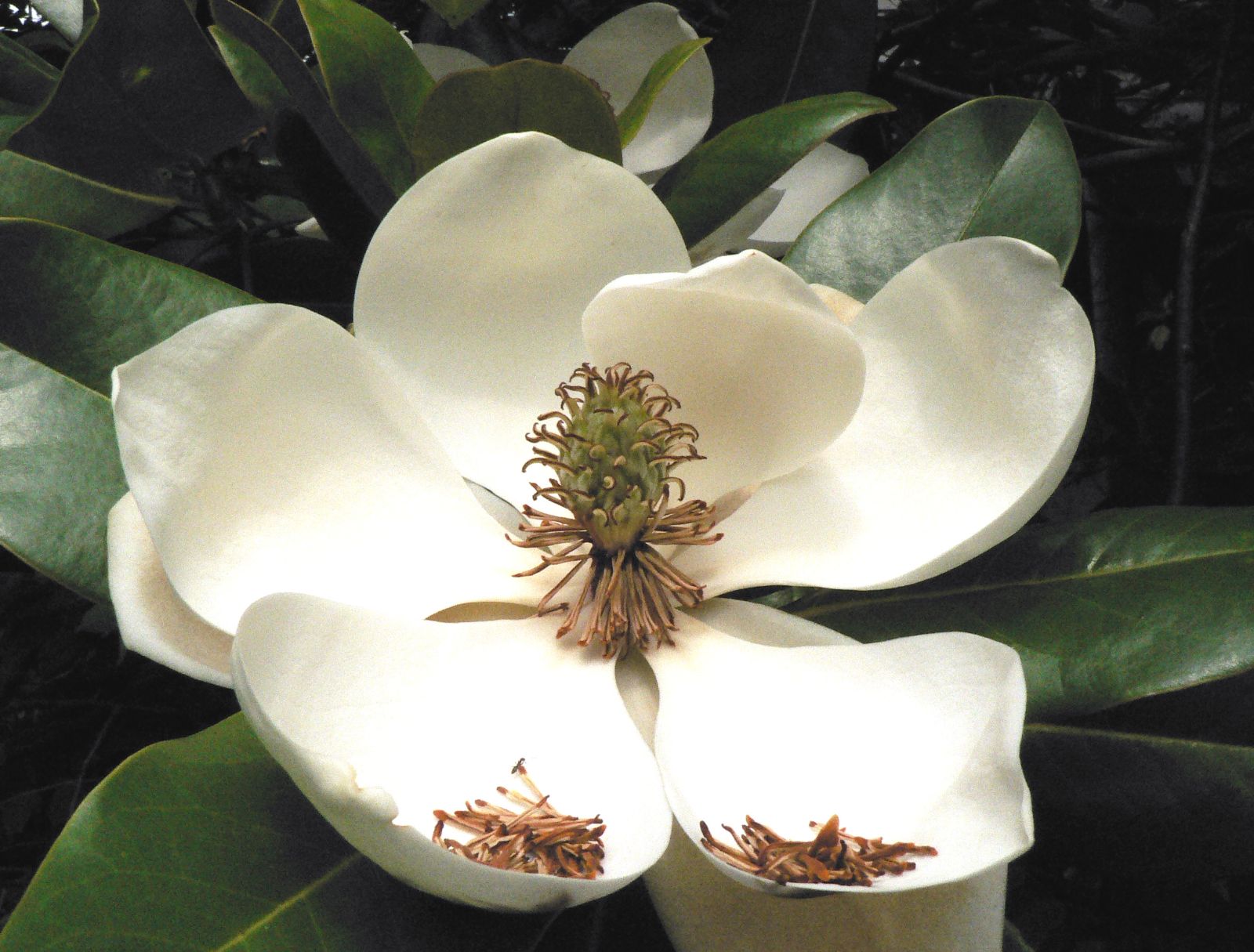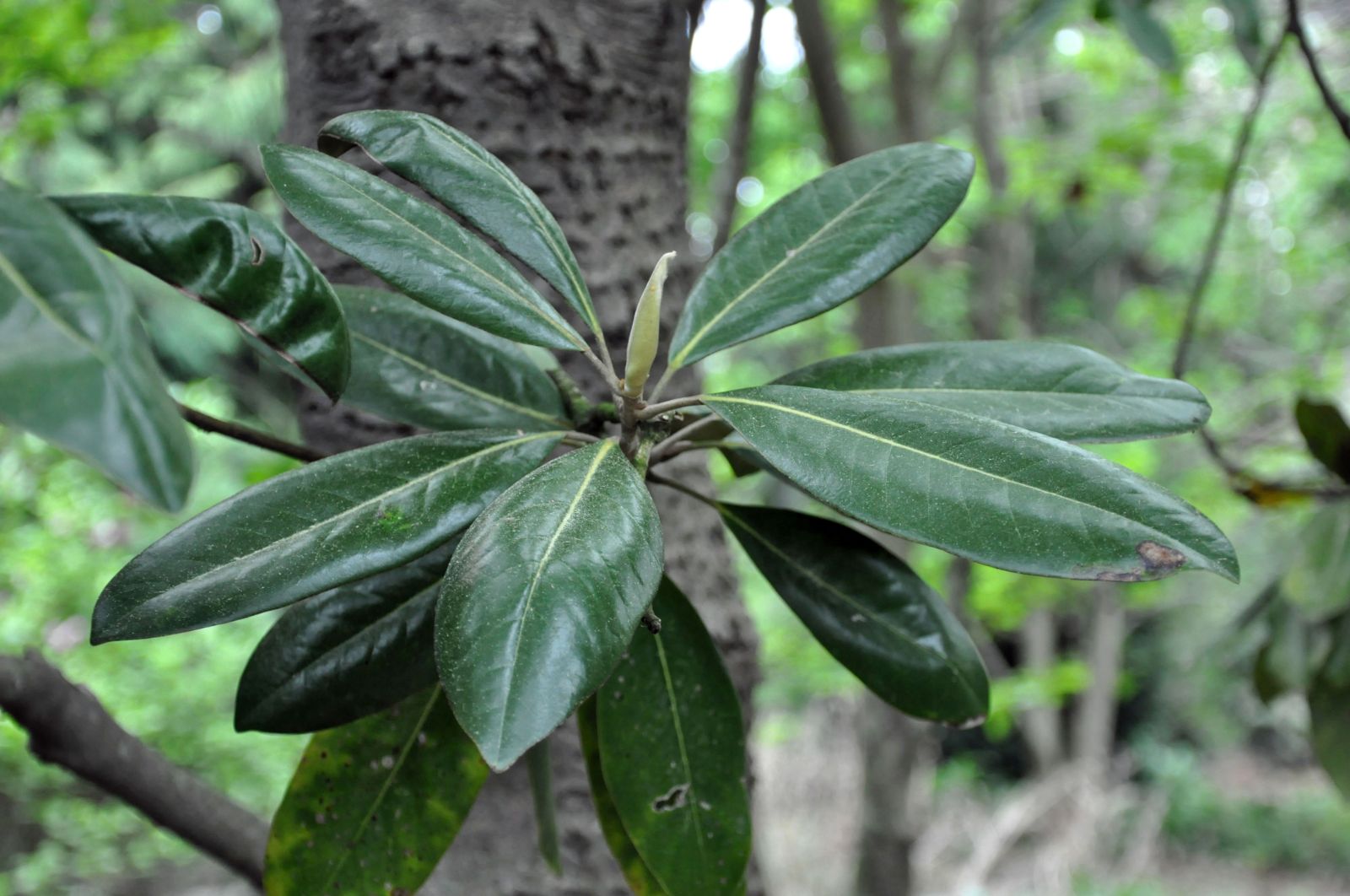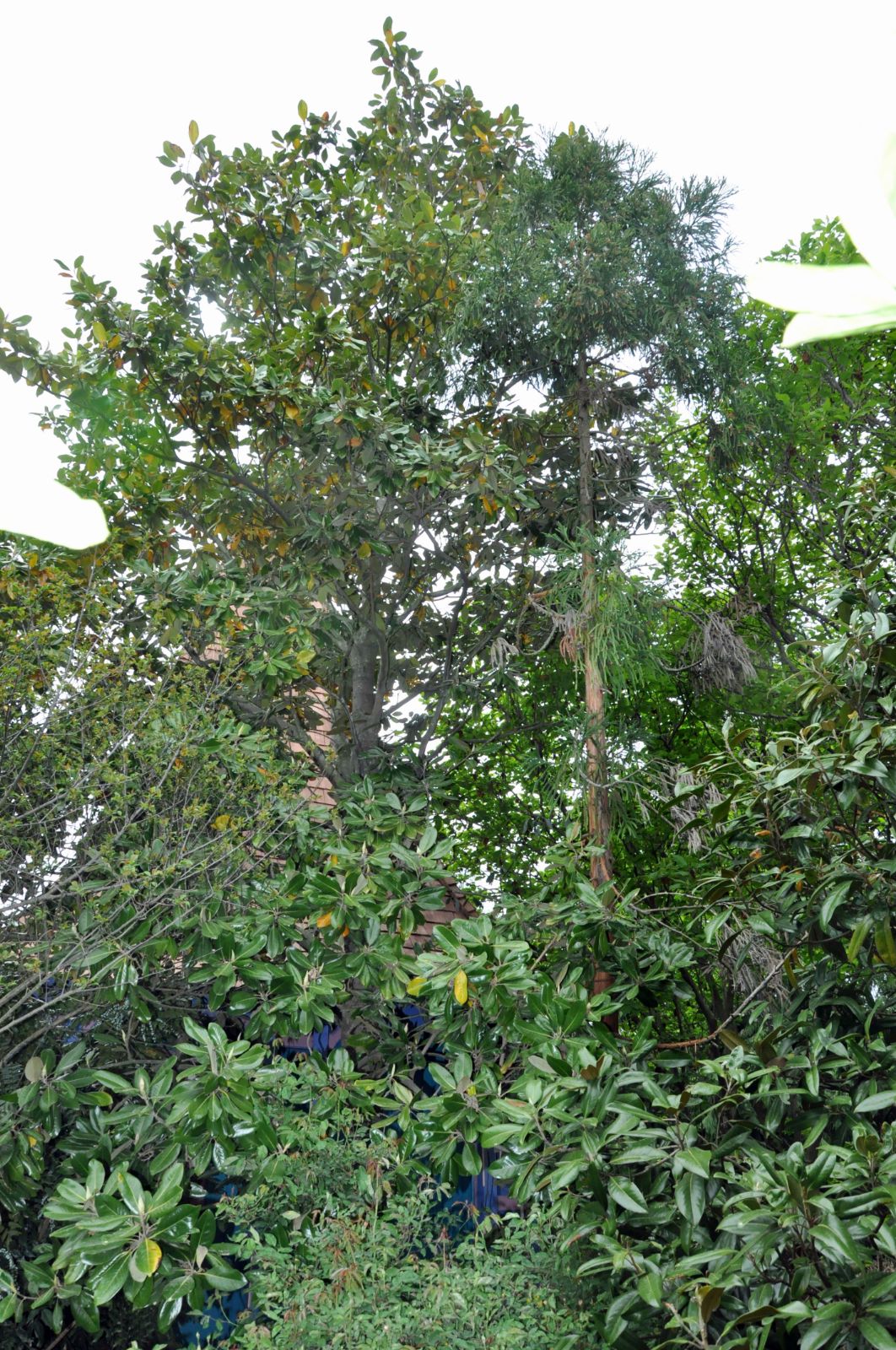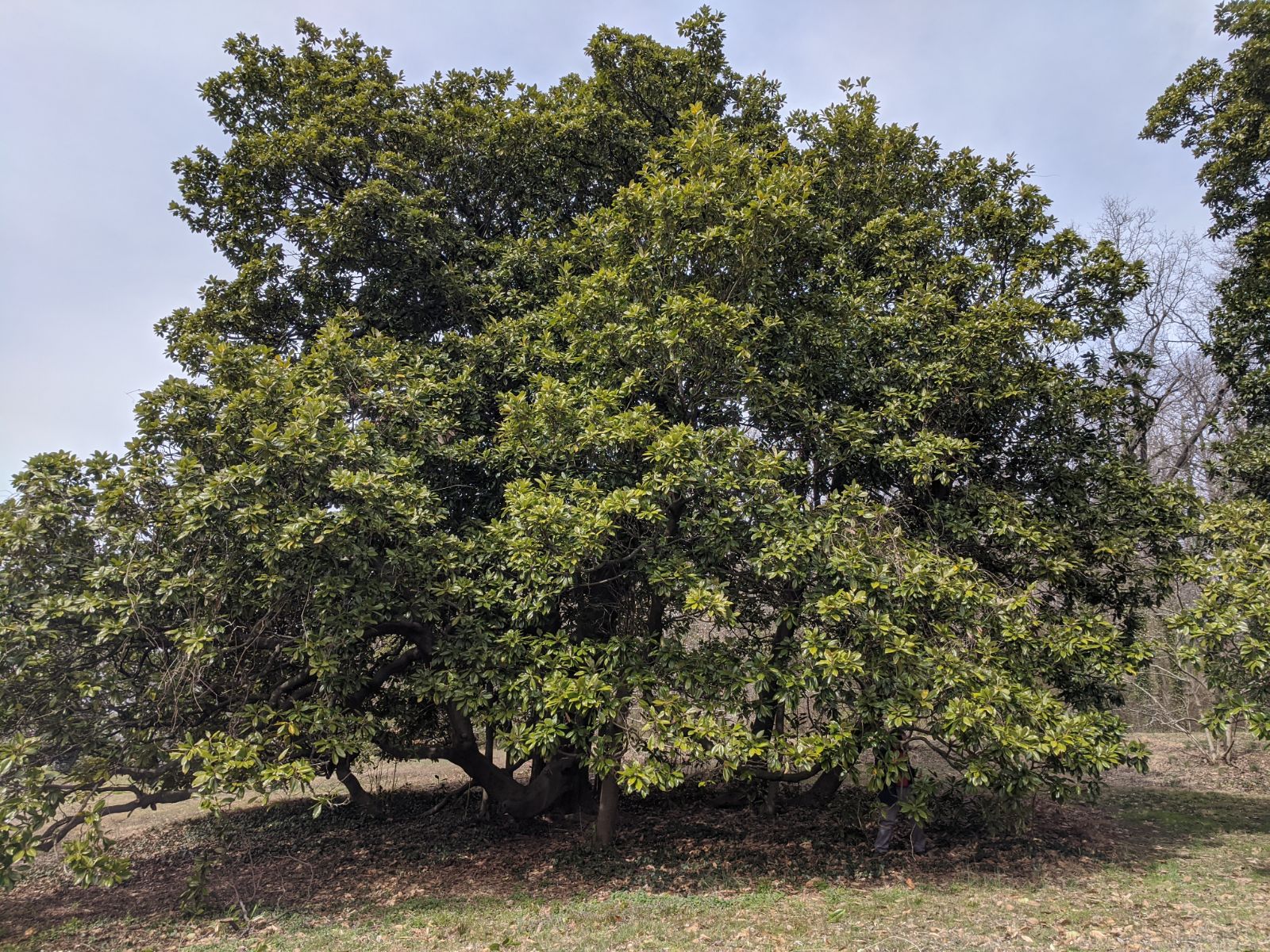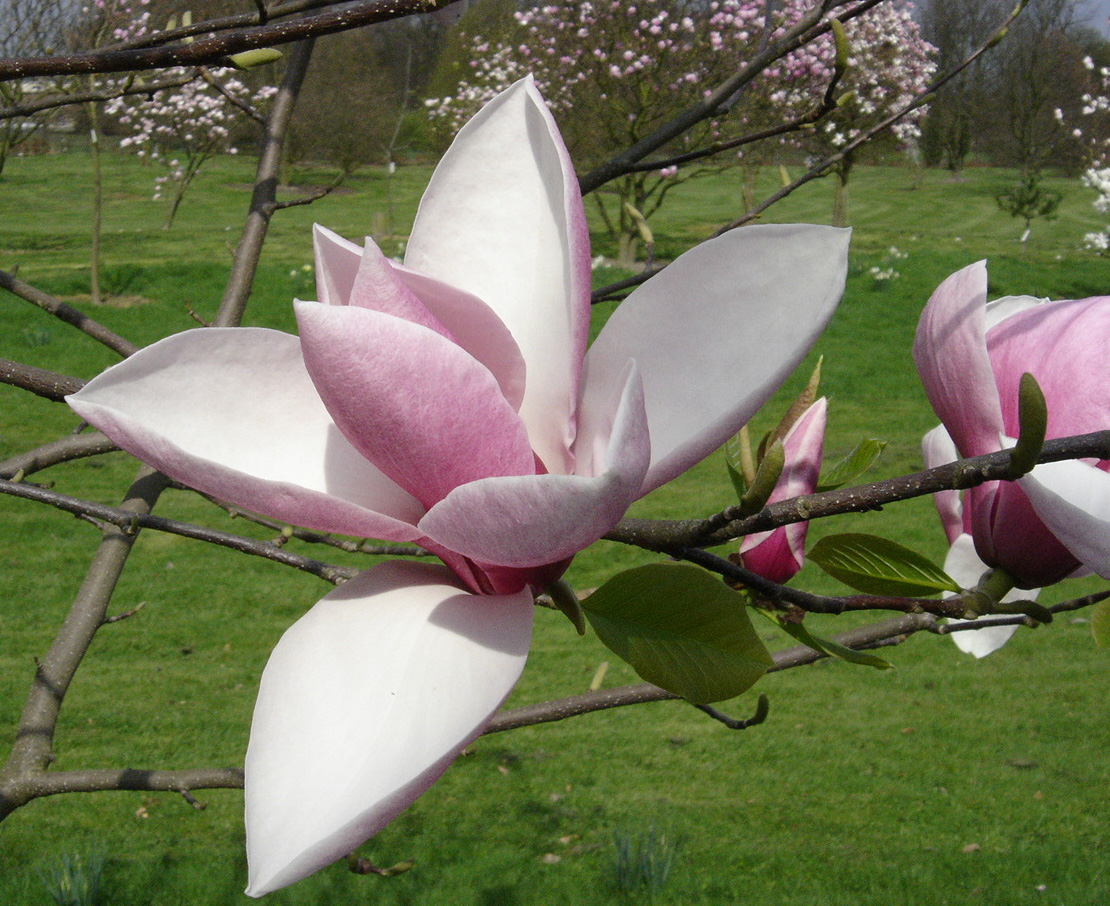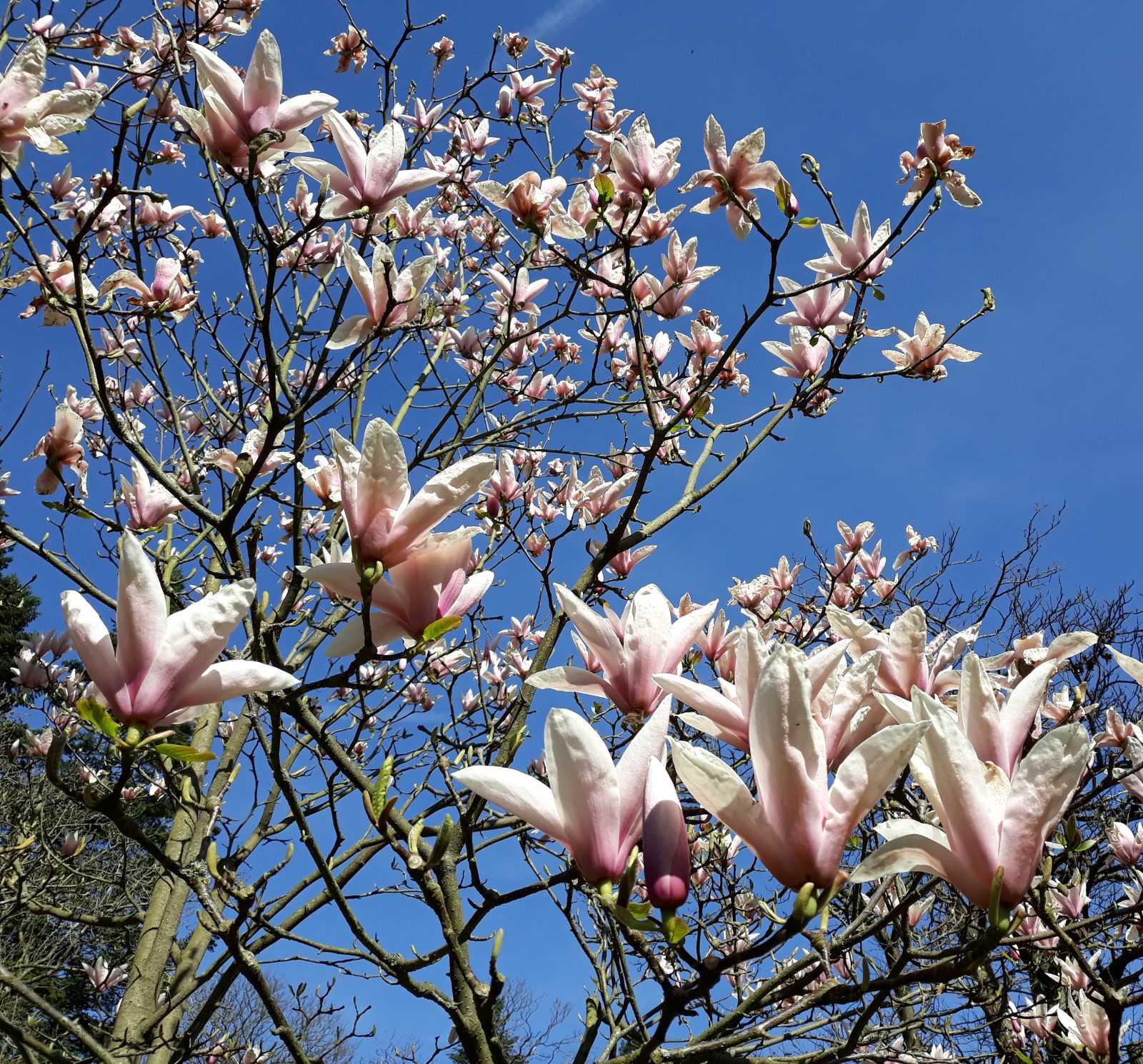Magnolia Cultivars F
Sponsor
Kindly sponsored by
The Roy Overland Charitable Trust

Credits
Julian Sutton (2022)
Recommended citation
Sutton, J. (2022), 'Magnolia Cultivars F' from the website Trees and Shrubs Online (treesandshrubsonline.
Genus
Infraspecifics
Other taxa in genus
- Magnolia acuminata
- Magnolia × alba
- Magnolia amabilis
- Magnolia amoena
- Magnolia aromatica
- Magnolia biondii
- Magnolia × brooklynensis
- Magnolia campbellii
- Magnolia cathcartii
- Magnolia cavaleriei
- Magnolia caveana
- Magnolia champaca
- Magnolia changhungtana
- Magnolia chapensis
- Magnolia compressa
- Magnolia conifera
- Magnolia Cultivars A
- Magnolia Cultivars B
- Magnolia Cultivars C
- Magnolia Cultivars D
- Magnolia Cultivars E
- Magnolia Cultivars G
- Magnolia Cultivars H–I
- Magnolia Cultivars J
- Magnolia Cultivars K
- Magnolia Cultivars L
- Magnolia Cultivars M
- Magnolia Cultivars N–O
- Magnolia Cultivars P
- Magnolia Cultivars Q–R
- Magnolia Cultivars S
- Magnolia Cultivars T
- Magnolia Cultivars U–V
- Magnolia Cultivars W–Z
- Magnolia cylindrica
- Magnolia dandyi
- Magnolia dawsoniana
- Magnolia de Vos and Kosar hybrids
- Magnolia decidua
- Magnolia delavayi
- Magnolia denudata
- Magnolia doltsopa
- Magnolia duclouxii
- Magnolia ernestii
- Magnolia figo
- Magnolia floribunda
- Magnolia × foggii
- Magnolia fordiana
- Magnolia foveolata
- Magnolia fraseri
- Magnolia fulva
- Magnolia globosa
- Magnolia × gotoburgensis
- Magnolia grandiflora
- Magnolia grandis
- Magnolia Gresham hybrids
- Magnolia guangdongensis
- Magnolia hookeri
- Magnolia insignis
- Magnolia Jury hybrids
- Magnolia × kewensis
- Magnolia kobus
- Magnolia kwangtungensis
- Magnolia laevifolia
- Magnolia lanuginosa
- Magnolia leveilleana
- Magnolia liliiflora
- Magnolia × loebneri
- Magnolia lotungensis
- Magnolia macclurei
- Magnolia macrophylla
- Magnolia martini
- Magnolia maudiae
- Magnolia nitida
- Magnolia obovata
- Magnolia officinalis
- Magnolia opipara
- Magnolia × proctoriana
- Magnolia × pruhoniciana
- Magnolia rostrata
- Magnolia salicifolia
- Magnolia sapaensis
- Magnolia sargentiana
- Magnolia sieboldii
- Magnolia sinensis
- Magnolia sinica
- Magnolia sinostellata
- Magnolia × soulangeana
- Magnolia sprengeri
- Magnolia stellata
- Magnolia tamaulipana
- Magnolia × thomsoniana
- Magnolia tripetala
- Magnolia × veitchii
- Magnolia virginiana
- Magnolia × wieseneri
- Magnolia wilsonii
- Magnolia xinganensis
- Magnolia yunnanensis
- Magnolia yuyuanensis
- Magnolia zenii
Our primary references for cultivar information are Jim Gardiner’s (2000) ‘Magnolias: a Gardener’s Guide’ and Matt Lobdell’s (2021) register of cultivars for Magnolia Society International. Further references are cited where relevant. Other important accounts of cultivars include Dorothy Callaway’s (1994) ‘The World of Magnolias’ and (in German) Beet Heerdegen and Reto Eisenhut’s (2020) ‘Magnolien und Tulpenbäume: Magnoliaceae’. Magnolia Society International’s journal ‘Magnolia’ is an ongoing trove of information.
'F.J. Williams'
M. sargentiana var. robusta × M. campbellii 'Lanarth'
RHS Hardiness Rating: H5
USDA Hardiness Zone: 7-9
Flowers precocious and early (February to early March in Cornwall), large, cup-and-saucer shaped; tepals rich red-purple outside, inside paler and fading. A small to medium tree, larger flowered and earlier than ‘Lanarth’. From a cross made by Philip Tregunna at Caerhays Castle, Cornwall, in 1987; named for Julian Williams, then custodian of Caerhays. Williams, Gardiner & Gallagher (2016) highlight it as an up-and-coming cultivar in Europe.
FAIRY MAGNOLIA BLUSH
See Magnolia Cultivars M ‘Micjur01’.
FAIRY MAGNOLIA CREAM
See Magnolia Cultivars M ‘Micjur02’.
FAIRY MAGNOLIA WHITE
See Magnolia Cultivars M ‘Micjur05’.
'Fei Huang'
M. acuminata × M. denudata
Synonyms / alternative names
Magnolia YELLOW RIVER
Magnolia denudata 'Fei Huang'
RHS Hardiness Rating: H6
USDA Hardiness Zone: 6-9
Flowers with or just before the new leaves, cream or pale yellow from yellow buds, fragrant. A small tree with a broad ovoid crown, introduced to Europe from Chinese cultivation in about 2000, and widely marketed (Edwards & Marshall 2019; van den Berk Nurseries 2022). Nurseries often list it incorrectly as a clone of M. denudata although flower colour and timing bely its hybrid origin. Similar to ‘Elizabeth’; Philippe de Spoelberch, Belgium, considers it no better (pers. comm. 2021).
FELIX JURY
See Magnolia Cultivars J ‘Jurmag2’.
'Ferruginea'
See Magnolia grandiflora ‘Ferruginea’.
'Fertile Myrtle'
See Magnolia acuminata ‘Fertile Myrtle’.
FESTIROSE
See Magnolia denudata ‘Minrose’.
'Findlay's Form'
See Magnolia sinensis ‘Findlay’s Form’.
'Fireglow'
M. cylindrica hybrid × M. denudata 'Sawada's Pink'
RHS Hardiness Rating: H6
USDA Hardiness Zone: 6-9
Flowers precocious, cup-shaped; tepals 6, to 12.5 cm long, white with a beautiful rich magenta lower third, and magenta stripe to the tip. An upright, conical small tree with thick, leathery leaves, raised by Phil Savage, MI. The “M. cylindrica” parent was a hybrid grown in Michigan from Lu Shan Botanical Garden seed (see under M. cylindrica), but probably not ‘Pegasus’.
'First Flush'
(M. × soulangeana 'Amabilis') × M. campbellii
RHS Hardiness Rating: H5
USDA Hardiness Zone: 6-9
Flowers precocious, in early spring, white, flushed pink on the lower half outside. A small tree bred by Os Blumhardt, New Zealand, before 1982.
'Flamingo'
M. acuminata 'Fertile Myrtle' × M. sprengeri 'Diva'
RHS Hardiness Rating: H6
USDA Hardiness Zone: 5-9
Flowers tulip-shaped, sometimes before the leaves; tepals rosy pink 10–12.5 cm, outer ones reflexing. An upright, notably hardy, medium tree. Raised by Phil Savage, MI, before 1992.
'Forrest's Pink'
Synonyms / alternative names
Magnolia denudata 'Forrest's Pink'
RHS Hardiness Rating: H6
USDA Hardiness Zone: 5-9
Flowers precocious, resembling M. denudata in shape; tepals 9–11, at their best a beautiful clean pink flushed darker at the base. A single or multistemmed, small, upright growing tree raised as a seedling in the 1920s at Caerhays, Cornwall and thought to have originated from one of George Forrest’s seed collections. Long listed as a cultivar of M. denudata, flow cytometry shows that it is a heptaploid and hence almost certainly a hybrid (unpublished data of R. Olsen & S. Lura (2013) cited by US National Arboretum 2022 and Lobdell 2021). Its precise parentage remains unknown.
It appears that its colour depends on temperature. In SE England the colour is generally disappointing. However, when grown in Cornwall or by Sir Peter Smithers at Vico Morcote, Switzerland, where spring temperatures are generally warmer, it performs far better. Smithers was consistently impressed with it over 20 years as being a clearer, truer pink than the best of the established M. × soulangeana clones, having none of the purplish tints they possess (Gardiner 2000). Highly rated by Philippe de Spoelberch despite it flowering too early for him in Belgium to escape spring frosts (pers. comm. 2021).
'Fragrance'
See Magnolia × gotoburgensis ‘Fragrance’.
'Frank Gladney'
RHS Hardiness Rating: H5
USDA Hardiness Zone: 7-9
Flowers precocious but rather late, cup-and-saucer form, large to 30 cm across; tepals broad, 12, deep pink outside, white inside. Vigorous, upright small to medium tree selected from Gresham hybrids by Ken Durio (Fogg & Del Tredici 1984).
'Frank's Masterpiece'
(M. × soulangeana 'Deep Purple Dream') × M. 'Paul Cook'
RHS Hardiness Rating: H6
USDA Hardiness Zone: 5-9
Flowers precocious, to 28 cm across; tepals 8–9, very deep red-purple outside. A small tree with strong apical dominance and somewhat weeping branches, raised by Frank Galyon, TN, before 1997; three quarters of its genetic heritage is M. × soulangeana (Callaway 1998). Philippe de Spoelberch, Belgium, notes ‘good big flowers, poor habit’ (pers. comm. 2021).
'Freeman'
M. virginiana × M. grandiflora
RHS Hardiness Rating: H6
USDA Hardiness Zone: 6b-9
Evergreen, columnar (at least at first), large shrub or small tree, resembling M. grandiflora but leaves slightly narrower and with less indumentum. Fragrant, globular white flowers may open (rarely in Britain) to a cup 12 cm across. From a controlled cross made in 1930 by Oliver Freeman of the US National Arboretum, named 1962 (compare ‘Maryland’, of the same origin which is a broader plant with larger flowers which open more readily, and larger leaves).
'Full Eclipse'
RHS Hardiness Rating: H5
USDA Hardiness Zone: 7-9
Flowers precocious, tulip-shaped; tepals 9, to 12.5 cm long, slender and pointed, deep pink-red outside, white inside. A strongly growing small to medium tree of columnar habit, selected from Gresham seedlings by John Giordano, AL, before 1990; parentage uncertain.

